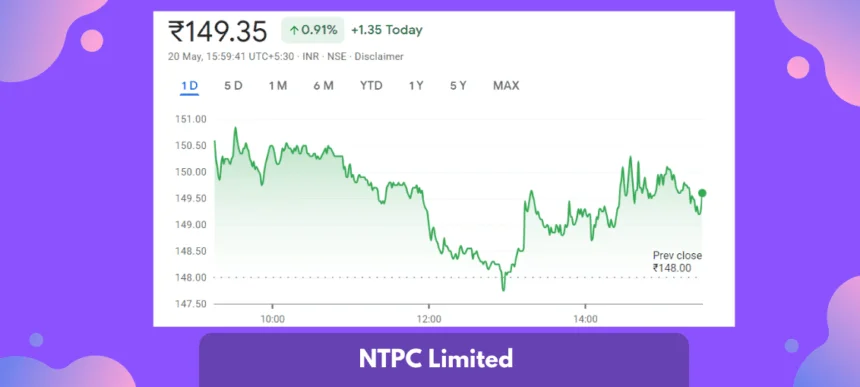The National Hydrogen Energy Mission was announced by Union Finance Minister Nirmala Sitharaman in her budget speech on February 1, 2021. The government’s goal with this mission is to make India a global hub for the production and export of green hydrogen. Also, in a recent conference, Union Road Transport and Highways Minister Nitin Gadkari stated that Green Hydrogen is the solution to India’s fuel problem and the fuel of the future.
Nitin Gadkari surprised the entire nation by arriving at Parliament in a hydrogen-powered car in March 2022. This event is a clear indication to India that hydrogen fuel is the way of the future. Along with the government, Indian business tycoons are now heavily investing in the National Hydrogen Energy Mission (NHME), which will assist the country in moving toward hydrogen energy.
What is Green Hydrogen?
In simple words, Green Hydrogen is an alternative to fossil fuels that have literally zero carbon emissions. Green hydrogen is a universal, light and highly reactive fuel – created through the chemical process electrolysis. This method separates hydrogen from oxygen in water by using an electric current. Through this process we can generate an extraordinary amount of energy without emitting carbon dioxide into the atmosphere.
Why is Green Hydrogen important for the Indian economy?
Let’s understand why renewable energy is super important for India. We will discuss three major reasons for this –
1. As we all know, the Russia-Ukraine conflict has skyrocketed oil and gas prices. The same Indian economy is also heavily reliant on oil from the Middle East. As a result of such geopolitical tensions, the country is vulnerable to oil.
2. The Paris Agreement, which is adopted by 196 countries including India. Due to this, India is set to cut down 50% of Greenhouse emissions by 2030. The Paris Agreement is a legally binding international treaty on climate change and the goal is to limit global warming to well under 2 degrees, preferably 1.5 degrees Celsius, relative to pre-industrial levels.
3. Steel, transportation, and chemicals are among India’s most important industries. Which currently has no other viable option for running these industries profitably using renewable energy. If India is successful in finding this solution, it will become a net exporter of renewable energy while also gaining extraordinary power in global politics.
Types of Hydrogen
Based on the method of its production. Hydrogen is categorized in 4 major categories-

1- Grey Hydrogen:
Grey Hydrogen is produced by breaking down methane and coal by a process called Steam Methane Reforming. This is the most common method of producing hydrogen today.
2- Blue Hydrogen:
This type of hydrogen is almost the same as grey Hydrogen but in this case 95 percent of hydrogen is stored and reused.
3- Turquoise Hydrogen:
The process of producing turquoise hydrogen is known as pyrolysis.
4- Green Hydrogen:
Green Hydrogen as the name suggests, is produced using renewable energy and this process is called Electrolysis. This is the cleanest form of Hydrogen where there is no carbon by-product at all.
Green hydrogen Policy 2022 –
The Ministry of Power notified the first phase of the Green hydrogen/Green ammonia Policy on February 17, with the goal of producing 5 million tones of green hydrogen by 2030, reaffirming India’s ambition to become a green Hydrogen production and export hub as envisaged in the National Hydrogen Mission.
Features of Green Hydrogen:
- As part of the policy, a renewable energy plant that is set up to supply power for green hydrogen production before July 2025 will get 25 years of free power transmission.
- Green Hydrogen producers will be exempt from interstate transfer fees. This will benefit the steel, oil, and fertiliser industries economically.
- Green hydrogen and ammonia manufacturers are permitted to purchase renewable energy from the power exchange or set up Renewable Energy (RE) capacity themselves or through any other developer, anywhere.
- This policy also assists the government in making India a green hydrogen hub and in meeting environmental and climate-related goals.
Green Hydrogen Stocks in India
As we know, India is the 3rd largest consumer of fossil fuels in the world. So, after the Ministry of power released the National Hydrogen Mission policy on green hydrogen. India is now focusing on renewable energy and aiming to produce 5 million tons of green hydrogen till the end of year 2030. Many large players like – Reliance, Adani and Tata Group are already investing in renewable energy. It is the golden time to invest in renewable energy-based companies. Let’s find out.
1- Reliance Industries:

Reliance is one of the largest private power corporation sectors in India. This industry is already involved in many markets including energy. Recently Mukesh Ambani, The Managing director of Reliance Industries introduced a $75 billion plan to make India a Hydrogen Hub.
Why to invest:
- RIL recently announced new plans to become carbon-neutral by 2035.
- Company also started working with Dhirubhai Ambani Green Energy to manufacture units for solar cells and modules, battery units, fuel cells and many other things which are required for Green Hydrogen.
- RIL Plans to produce Green Hydrogen at $1 per kg before the turn of this decade.
2- Larsen and Toubro:

Larsen & Toubro Limited (L&T) is a technology, engineering, construction and manufacturing company. It is one of India’s largest and most respected private-sector companies.
Why to invest:
- L&T signed a pact with HydrogenPro AS of Norway to set up an alkaline water electrolysis unit in India.
- Company already set up a Hazira complex, green hydrogen plants and also plans to set up a few more plants in the coming years.
- Further, the company also plans to spend between ₹10-15 billion on its green initiatives in next coming years.
3- NTPC Ltd:

NTPC Limited, formerly known as National Thermal Power Corporation Limited, which is owned by the Government of India. NTPC provides energy solutions to the state-owned power utilities.
Why to invest:
- NTPC issued India’s first green hydrogen fuelling station tender which was released in July 2021.
- Company also working to use renewable energy from its upcoming projects to produce hydrogen commercially.
- NTPC has announced plans to generate 4,750 MW of solar power at the Rann of Kutch.
4- Indian Oil Corportation Ltd (IOC):

Indian Oil Corpn. Ltd is India’s flagship national oil company. Indian Oil operates the largest and the widest network of petrol and diesel stations in the country. For the green energy sector, the company set up approx. 257 EV charging stations and 29 battery swapping stations across India. Company also owns and operates 9 oil refiners in India.
Why to invest:
- Recently, Company announced its plans to build a green hydrogen plant in Mathura, UP, with a capacity of around 160,000 barrels per day.
- Indian Oil is also planning to start a new hydrogen manufacturing facility in Kochi.
- Companies also plan to use hydrogen for their refineries in the near future.
5- GAIL (India):

GAIL (India) Ltd is the country’s flagship natural gas company, containing all aspects of the natural gas value chain, including exploration and production, processing, transmission, distribution, and marketing, as well as related services. GAIL is also owned by the Government of India.
Why to invest:
- To achieve India’s renewable energy plan to produce 5 million tons of green hydrogen by 2030. GAIL India is working on building the largest Green-Hydrogen facility in India.
- Company also looking to supplement its natural gas business with carbon-free fuel.
- Further, GAIL (India) also began testing an idea of the first-of-its-kind project of mixing hydrogen in the natural gas system.
So, those are the top five Indian company stocks to keep an eye on in 2022. Green energy is a growing energy sector in India.
However, hydrogen is still in its early stages of becoming a commercially viable fuel source. To compete with fossil fuels and other emerging technologies such as battery storage, the industry must scale and reduce costs. As a result, investors may want to keep an eye on the sector for a while as they try to determine which companies have the best chance of becoming long-term winners.
Advantages and disadvantages of Green Hydrogen-
In comparison to traditional fossil fuels, hydrogen has numerous advantages. We have discussed some of the benefits and drawbacks below –
Advantages:
- Green Hydrogen is the cleanest form of energy with a near zero carbon footprint.
- Unlike nuclear power or natural gas, this is not a toxic source for human health.
- It is very thick in energy and therefore very effective. It is three times more powerful than most fossil fuels.
Disadvantages:
- Hydrogen is a volatile and highly flammable substance. Also, Hydrogen is an odourless gas which makes it hard to detect leaks and makes it a dangerous fuel.
- Storage of hydrogen is also very difficult. It has to be converted into liquid form to store.
Also read:
Best Backlink Tools To Build SEO Strategy – Free & Paid (Compared)



